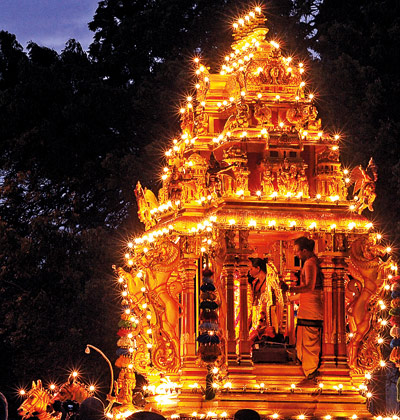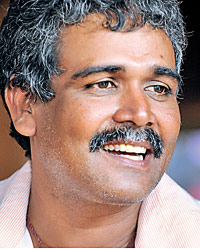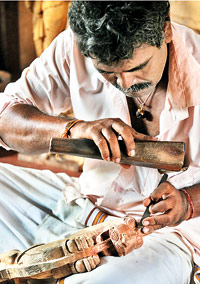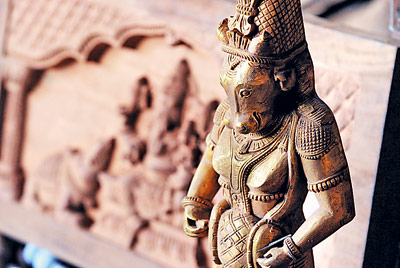Chariots of devotion

All ablaze: A chariot at Nallur temple, Jaffna, during the festival. Pix by Amila Gamage
“I am a traditional chariot-maker who inherited this job from my ancestors. Actually I remember we were carrying on this duty from our forefathers’ time.
This work is solely based in Hindu temples and done by men. In our village there are around eight traditional chariot workshops.
I inherited this job because all my other brothers were good in their studies and they went into different professions. But since I was not good in my studies my father asked me to carry on this task.
“This is not an easy job to do.It needs team work, discipline, respect and a lot of commitment. We have to work together as a team for a long period to make a beautiful chariot.
It takes 15 people working throughout a year to make a big chariot.Temple festivals are arranged at certain times a year. So sometimes we have to work within a time frame.
There is a huge responsibility on each individual in the team. If one person makes a mistake we can’t finish it on time.
“Usually we start making a chariot on an auspicious day and time and we carry the first master piece of wood to the temple and begin work at the temple after performing traditional rituals.

Jeyeprakash: Happy to carry on the family tradition
We use mainly ‘Kumbuk’ timber to make chariots and ‘Mee’ to make the statues. So far the supply of wood is not a problem.
“The chariots are solely made of wood and given a coat of varnish. Those days we did not use any colours. But now the tradition is changing.
Artists use colours to decorate the chariots. Traditional artists didn’t use much colours to decorate temples too. But now that is also changing.
“Earlier this was a caste-based profession. But due to the competition it has been changed and it is now open to everyone. Even artists from India come to Sri Lanka to do this work.
I know some times the government tries to help us by organising various exhibitions for artists. But unfortunately these are held after a short notice of two to three days so we are unable to get ready or present quality products at such exhibitions.
“This job gives great self-satisfaction and I gain a lot of respect among people. Before placing the statue of the God in it we have to first ride the chariot after donating it to the temple.
This duty was allocated to the carpenters to show them respect and to appreciate their hard work throughout the year.
“During the festival season when people worship the statue of the God placed in the chariot, made by me and my team it makes me really happy and proud.
But I am also sorry when I think there is no one to carry on this profession after my generation –my two daughters cannot follow in my footsteps.”



Dedicated work: Jeyeprakash carving a part of a chariot’s exterior ornamentation



